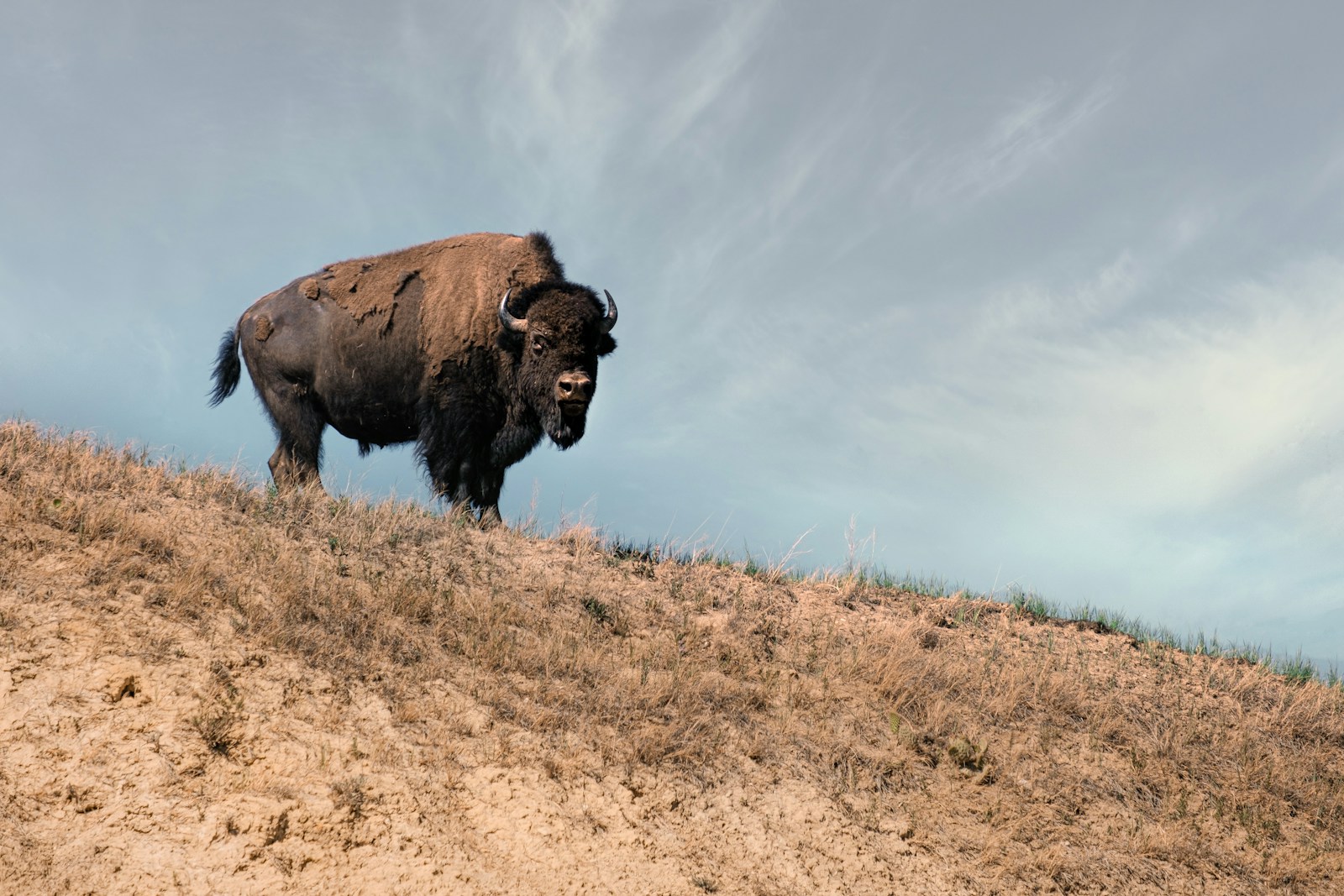The American bison stands as a living testament to the untamed spirit of the North American continent. Once numbering in the tens of millions, these magnificent creatures roamed the vast prairies and woodlands from Alaska to Mexico, shaping ecosystems and indigenous cultures for millennia. More than just an impressive animal, the bison embodies resilience, having recovered from near extinction to reclaim its place in the American landscape. As we explore what makes these massive bovines the quintessential symbol of American wilderness, we’ll discover how deeply intertwined they are with the nation’s natural heritage, cultural identity, and ongoing conservation story. Their comeback from the brink represents one of our greatest wildlife recovery successes—and serves as a powerful reminder of both what we stand to lose and what we can restore through dedicated conservation efforts.
The Prehistoric Giants: Bison’s Ancient Origins
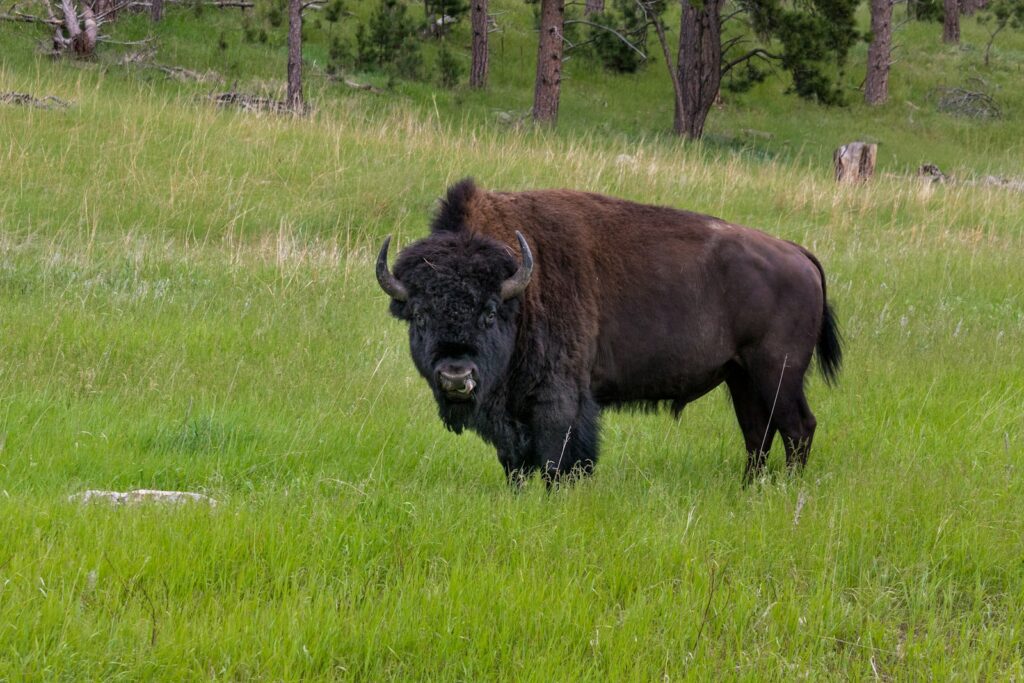
The American bison’s story begins not in North America but in Eurasia, where their ancestors evolved before crossing the Bering Land Bridge approximately 400,000 years ago. These early migrants evolved into Bison latifrons, an enormous Ice Age species that stood nearly 8 feet tall at the shoulder with horns spanning up to 6 feet across—dwarfing even today’s impressive specimens. As the climate changed at the end of the Pleistocene epoch, these giants evolved into the slightly smaller yet still formidable animals we recognize today: Bison bison, comprising two subspecies—the plains bison and the wood bison. Archaeological evidence shows that bison have been part of the North American landscape for thousands of generations, adapting to diverse habitats from grasslands to mountain meadows and surviving multiple climate shifts. Their long tenure on this continent makes them one of the few remaining megafauna that witnessed the rise and fall of ice ages, the arrival of the first humans, and the dramatic transformation of the American landscape.
Ecosystem Engineers: How Bison Shape the Land
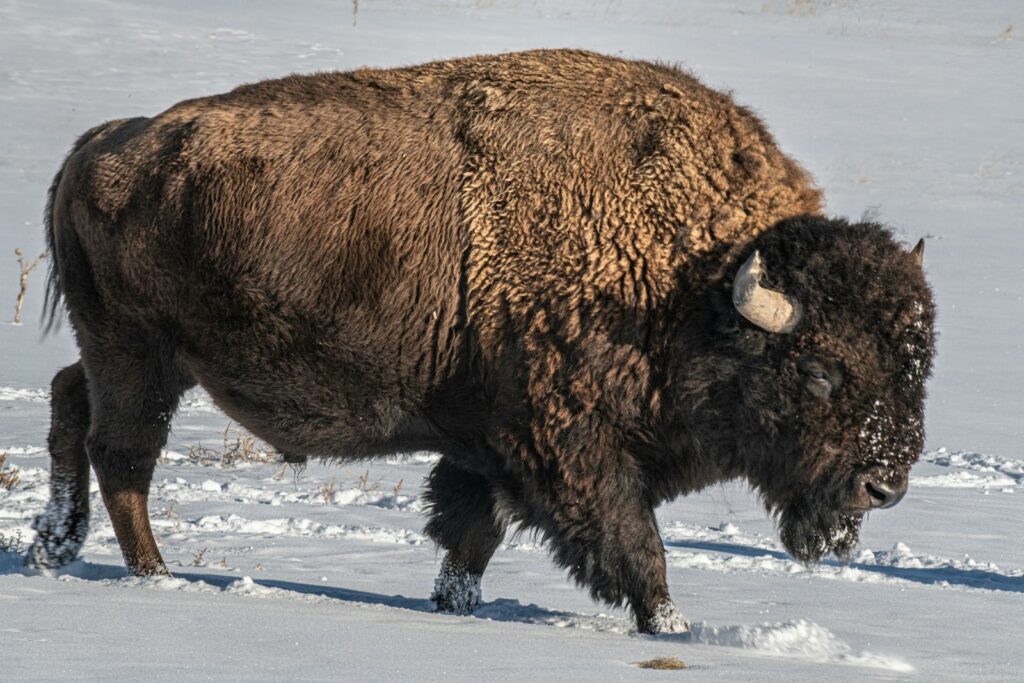
Far from being passive inhabitants of the prairie, bison actively modify their environment in ways that increase biodiversity and ecosystem health. Their distinctive wallowing behavior—rolling in dirt depressions—creates microhabitats that collect rainwater and support unique plant communities that otherwise wouldn’t exist. As they graze, bison don’t simply eat grass; they selectively consume plants in patterns that promote new growth and maintain the prairie’s mosaic structure, preventing any single plant species from dominating. Their hooves break up compacted soil and push seeds into the ground, while their nutrient-rich droppings fertilize the land and distribute seeds across vast areas. Research in places like Yellowstone National Park has demonstrated that areas with reintroduced bison populations show measurably higher plant diversity, insect abundance, and soil health compared to areas without them. This capacity to engineer entire ecosystems makes bison a keystone species whose presence or absence fundamentally determines what kind of wilderness exists.
Living Monuments: The Physical Grandeur of Bison
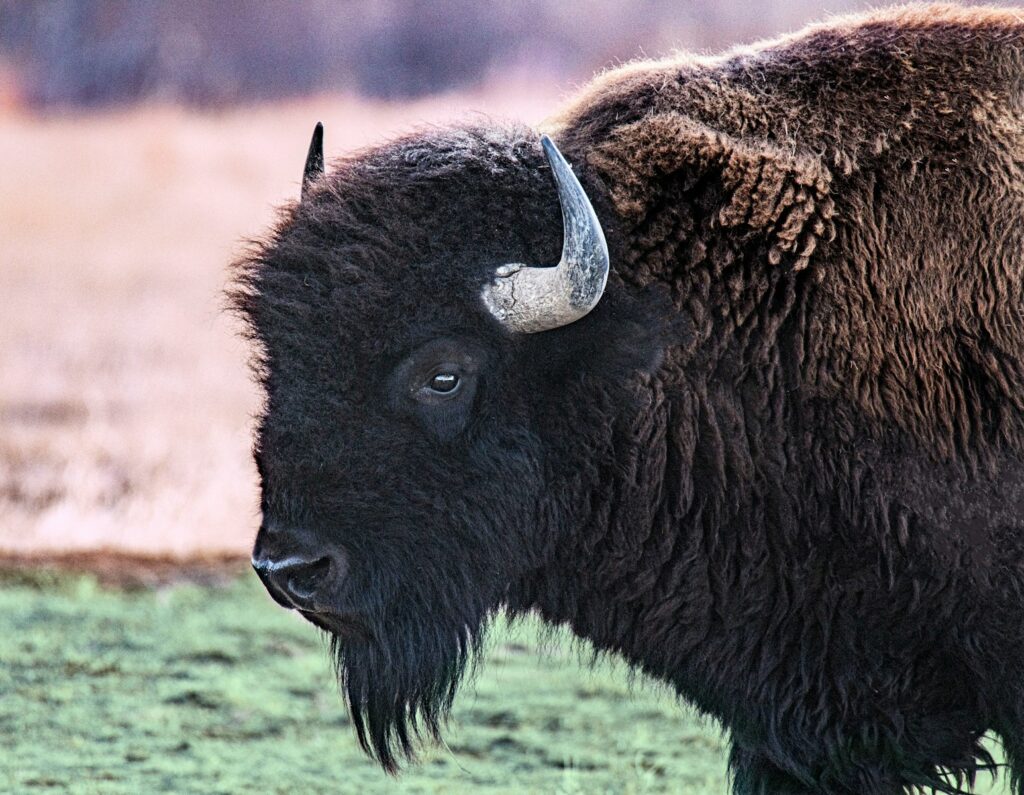
The physical presence of an American bison immediately commands attention and respect—few animals match their combination of size, power, and prehistoric appearance. Males (bulls) commonly weigh up to 2,000 pounds and stand six feet tall at the shoulder, with disproportionately massive heads and shoulders that create their distinctive silhouette. Despite their bulk, bison can reach speeds of 35 miles per hour, jump six feet vertically, and pivot with surprising agility, making them formidable creatures to encounter in the wild. Their thick, woolly coats—which shed dramatically each spring—enable them to withstand temperature extremes from -40°F to over 100°F, allowing them to thrive in the continent’s harshest environments. Perhaps most iconic are their curved horns and shoulder hump (formed by specialized muscles attached to elongated vertebrae), features that give bison their unmistakable profile on the horizon. This combination of physical attributes creates an animal that appears both ancient and timeless—a living connection to the primeval American wilderness.
Cultural Cornerstone: Bison in Native American Life

For countless generations, Indigenous peoples across North America built their cultures, spiritual practices, and survival strategies around bison. Tribes of the Great Plains, including the Lakota, Blackfeet, and Comanche, developed sophisticated hunting techniques and customs that reflected deep respect for the animals that sustained them. Every part of the bison served a purpose: meat for food, hides for tipis and clothing, bones for tools, sinew for bowstrings, and bladders for water containers—with over 130 distinct uses documented by anthropologists. Beyond material needs, bison occupied a central place in spiritual cosmology, featuring prominently in origin stories, ceremonies, and artistic expressions. Many tribes performed buffalo dances to call the herds or honor their sacrifice, while sacred white buffalo calves were revered as particularly powerful messengers. When European-American policies deliberately targeted bison for extermination in the 19th century, the assault wasn’t just on wildlife but on the foundation of Indigenous cultural identity and independence. Today, tribal-led bison restoration efforts across the continent represent both ecological conservation and cultural revitalization.
From Billions to Hundreds: The Near-Extinction Story
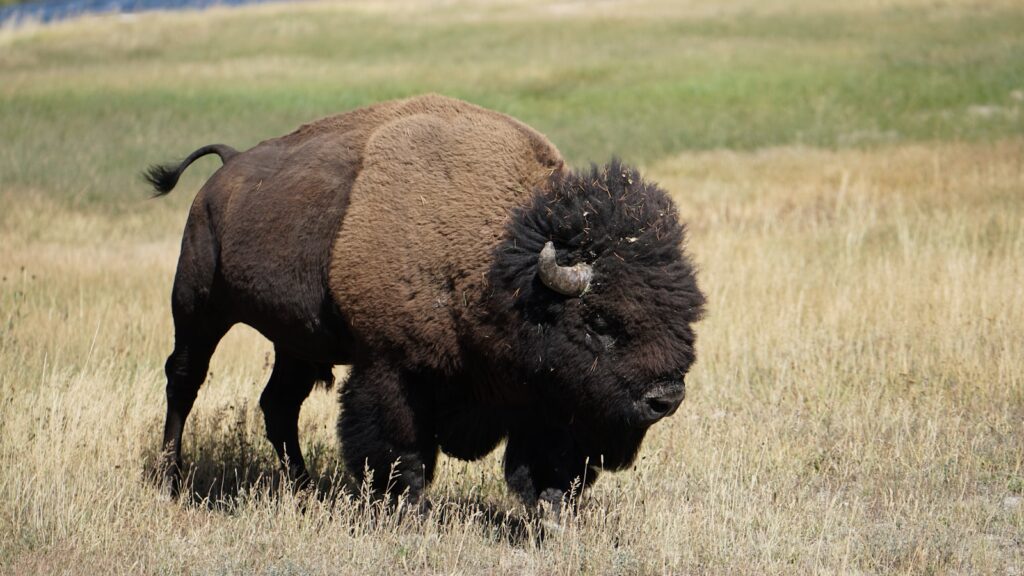
The decimation of American bison populations in the 19th century stands as one of history’s most dramatic wildlife collapses. Conservative estimates suggest 30-60 million bison roamed North America before European contact, with herds so vast that pioneers described them blackening the plains from horizon to horizon. By 1889, fewer than 1,000 remained alive—a staggering 99.99% reduction accomplished in just a few decades. This catastrophic decline resulted from a perfect storm of factors: commercial hunting for hides became industrialized with railroad access to eastern markets; U.S. military leaders explicitly supported bison eradication to undermine Native American resistance; and settlers shot bison to clear land for cattle and crops. The most intensive killing occurred between 1870 and 1883, when professional hunters like Buffalo Bill Cody could kill over 4,000 animals in just 18 months, leaving carcasses to rot while taking only hides and tongues. Had it not been for the last-minute intervention of a few conservationists and ranchers who protected small remnant herds, the species would have vanished completely—a sobering reminder of how quickly human activity can erase even the most abundant wildlife.
Conservation Triumph: The Recovery of an Icon
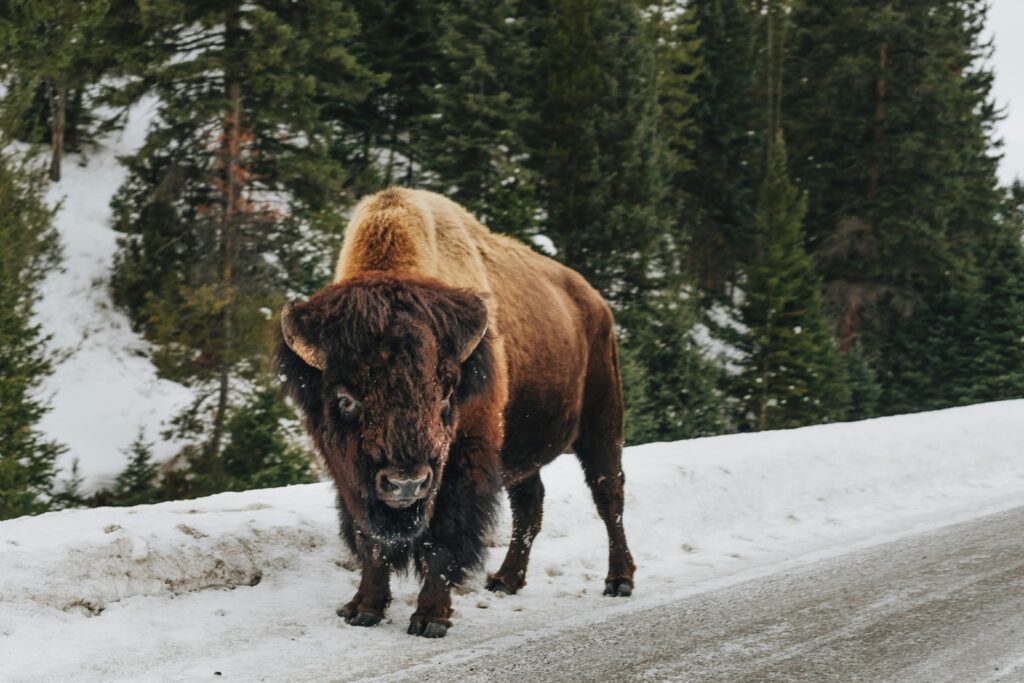
The resurrection of American bison from the brink of extinction represents one of conservation’s greatest success stories. The recovery began in the late 1800s when concerned individuals like William Hornaday of the Bronx Zoo and ranchers including Charles Goodnight and Michel Pablo began maintaining small private herds. In 1905, the American Bison Society was formed to coordinate protection efforts, successfully lobbying for the creation of national refuges and reintroduction programs. From a population nadir of fewer than 1,000 individuals, bison numbers have rebounded to approximately 500,000 today across North America, though the vast majority are in commercial herds with cattle gene introgression. True conservation herds—those managed primarily for ecological function and genetic purity—number only about 30,000 animals scattered across parks, preserves, and tribal lands. Organizations like the InterTribal Buffalo Council now manage over 20,000 bison across 69 tribal nations, reconnecting indigenous communities with their cultural heritage while restoring landscapes. This recovery demonstrates how dedicated conservation efforts can reverse seemingly hopeless situations, though today’s scattered herds remain a shadow of the continent-spanning populations that once existed.
A Living Time Capsule: Genetic Legacy and Adaptation
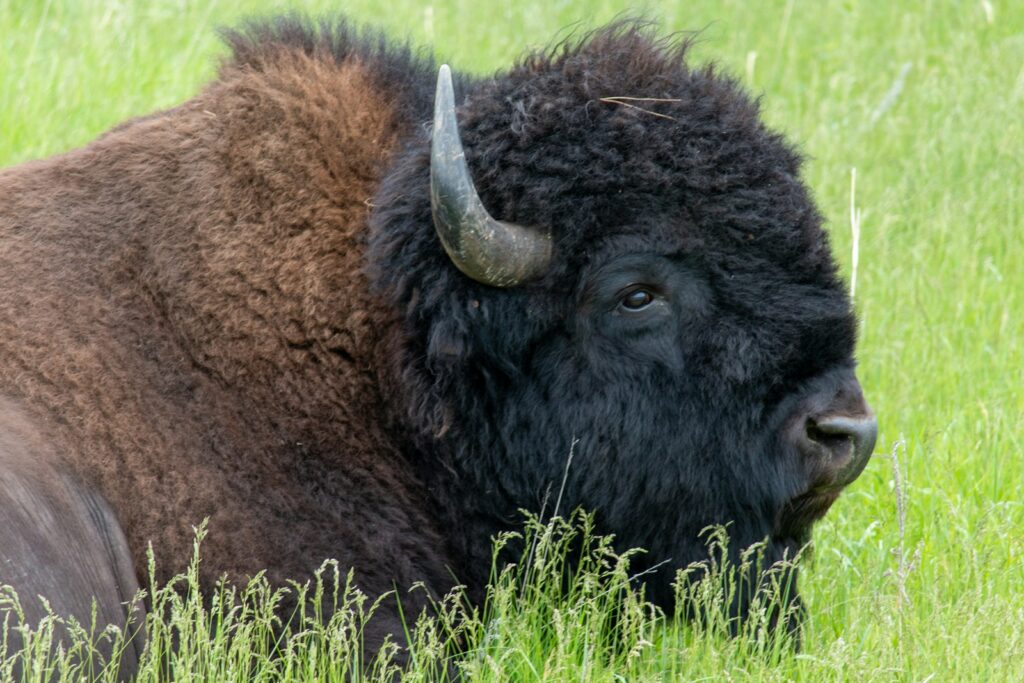
The DNA of American bison contains a remarkable genetic record spanning thousands of years of evolution and adaptation to North American ecosystems. Studies reveal that bison underwent multiple genetic bottlenecks during their history, first during the megafauna extinctions at the end of the Pleistocene, and most severely during the 19th-century population collapse that reduced the species to fewer than a thousand individuals. This recent bottleneck eliminated substantial genetic diversity, though careful genetic management in conservation herds aims to preserve what remains. One of the most fascinating aspects of bison genetics is their remarkable adaptations to extreme environments—genes regulating metabolism, hair growth, and fat storage allow them to thrive through brutal northern winters without supplemental food or shelter. Modern genomic analysis has also revealed evidence of limited historical hybridization with cattle in many herds, prompting intensive efforts to protect the few remaining herds with minimal cattle gene introgression, such as those in Yellowstone National Park. As climate change presents new challenges, the adaptive potential contained in bison genetics may prove crucial not just for their own survival but as a model for how large mammals can persist through environmental transformations.
Wilderness Ambassadors: Bison in National Parks
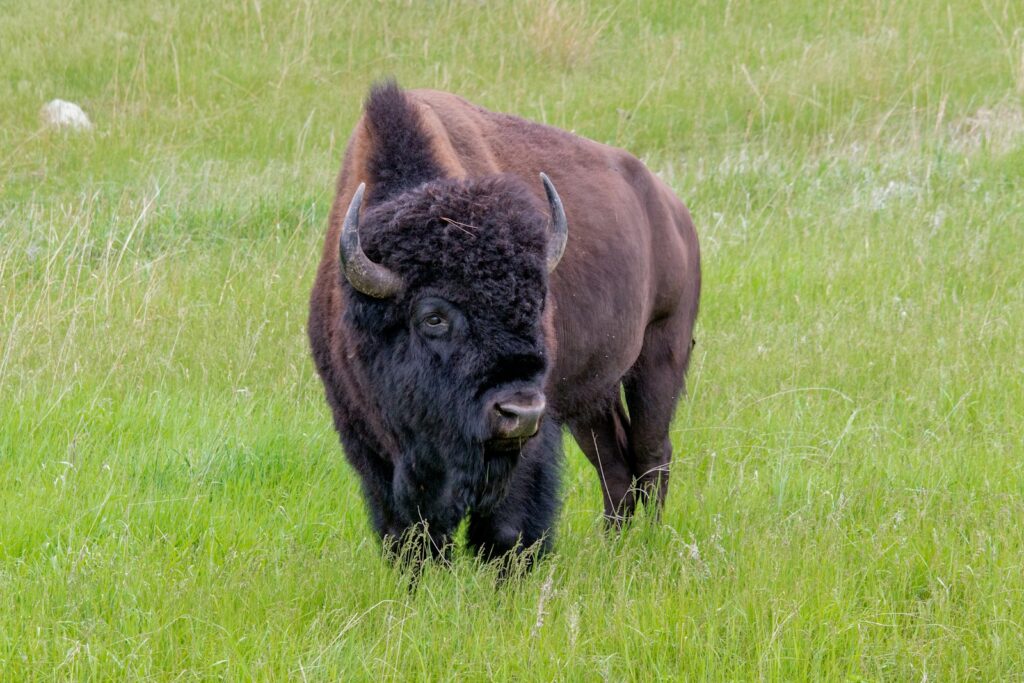
For millions of visitors each year, seeing free-roaming bison in national parks provides a powerful connection to America’s wild heritage. Yellowstone National Park claims special significance as the only place in the United States where bison have lived continuously since prehistoric times, never completely eliminated despite intensive hunting pressure. Today, the Yellowstone herd numbers approximately 5,000 animals, making it the largest conservation herd in the country and a major draw for the park’s four million annual visitors. Other significant park populations include those in Grand Teton, Wind Cave, Theodore Roosevelt, and Badlands National Parks, each offering visitors the opportunity to witness these magnificent animals in natural settings. These park herds serve multiple important functions: they maintain natural grazing patterns that benefit prairie ecosystems, provide research opportunities for scientists, and create meaningful wildlife viewing experiences that build public support for conservation. Perhaps most importantly, they allow modern Americans to experience—if only briefly—what early explorers described when they first encountered the vast herds of the untamed continent.
The Challenge of Coexistence: Modern Management Controversies
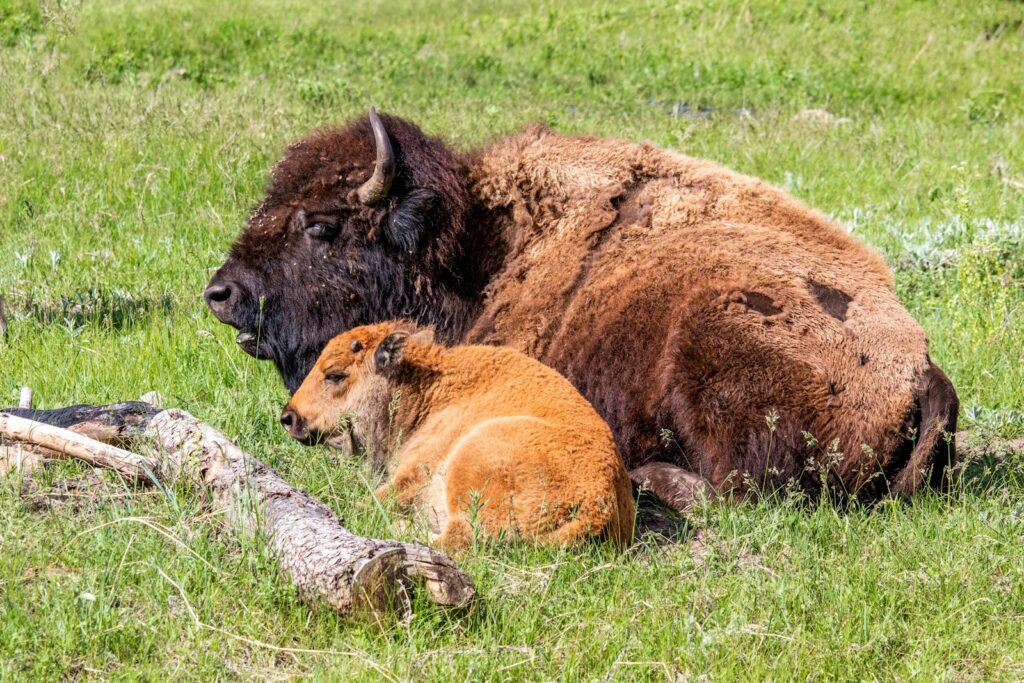
Despite their protected status and cultural significance, bison management remains fraught with complex challenges and controversies. Unlike most wildlife, bison face unique restrictions on their movements, often confined to park boundaries regardless of their natural migratory instincts. In Yellowstone, bison attempting to follow historic migration routes outside the park have frequently been hazed back or slaughtered due to concerns about brucellosis transmission to cattle, despite limited evidence of such transmission occurring in natural settings. Tribal nations advocate for the return of bison to their reservations but face opposition from neighboring ranching communities concerned about competition for grazing lands and potential property damage. Some conservation organizations push for the establishment of a “Buffalo Commons”—large, connected landscapes where bison could roam freely across multiple jurisdictions—while others prioritize maintaining smaller, isolated herds. These management debates reflect deeper tensions in American land use philosophy: whether large wildlife should be confined to designated parks or allowed to reclaim broader landscapes, and how to balance ecological restoration with modern economic interests that now occupy former bison habitat.
Beyond Meat: The Commercial Side of Bison
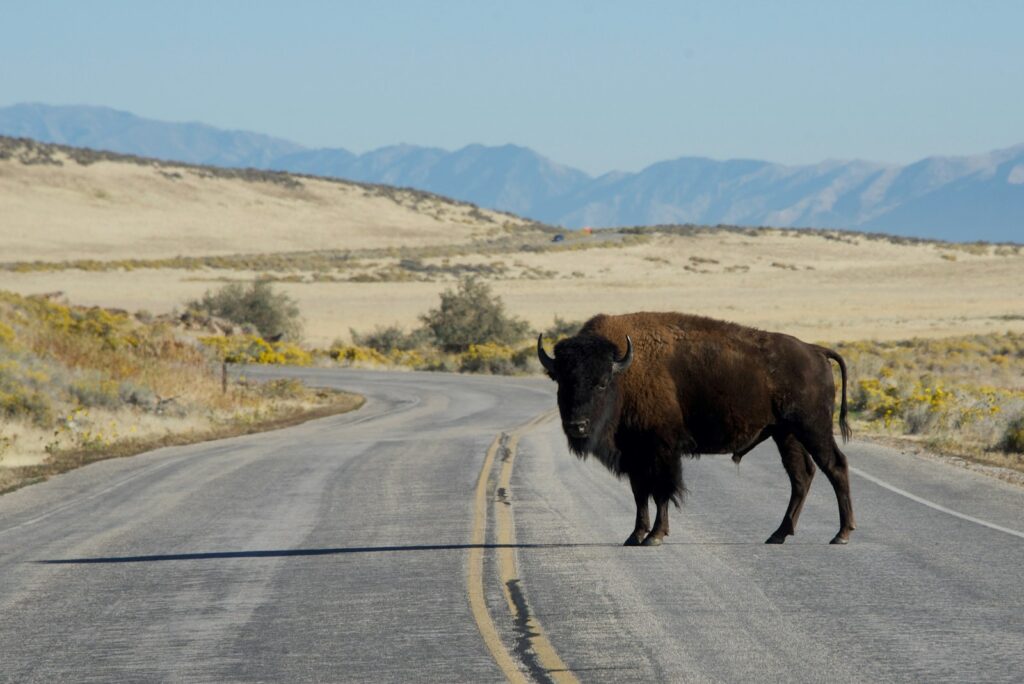
While conservation herds receive the most attention, the vast majority of American bison—over 90 percent—actually live in commercial settings raised for meat production. The bison industry has grown substantially since the 1970s, with approximately 2,500 private ranches now raising bison across North America. Consumers increasingly seek out bison meat for its nutritional profile—lower in fat and cholesterol than beef while higher in protein and iron—creating a sustainable market that incentivizes maintaining large populations. However, commercial production brings its own complexities: many commercial herds have some degree of cattle gene introgression from past crossbreeding attempts, leading to debate about genetic “purity” standards. Commercial bison are typically managed more intensively than conservation herds, with supplemental feeding, selective breeding, and earlier harvesting ages that can alter natural behaviors and physical characteristics. At the same time, well-managed bison ranches often maintain more natural grazing patterns than conventional cattle operations, and some work closely with conservation organizations to support genetic diversity and ecological research. This commercial dimension creates both tensions and opportunities, as economic value helps ensure bison’s continued presence on the landscape while potentially distancing them from their wild heritage.
Artistic Inspiration: Bison in American Culture
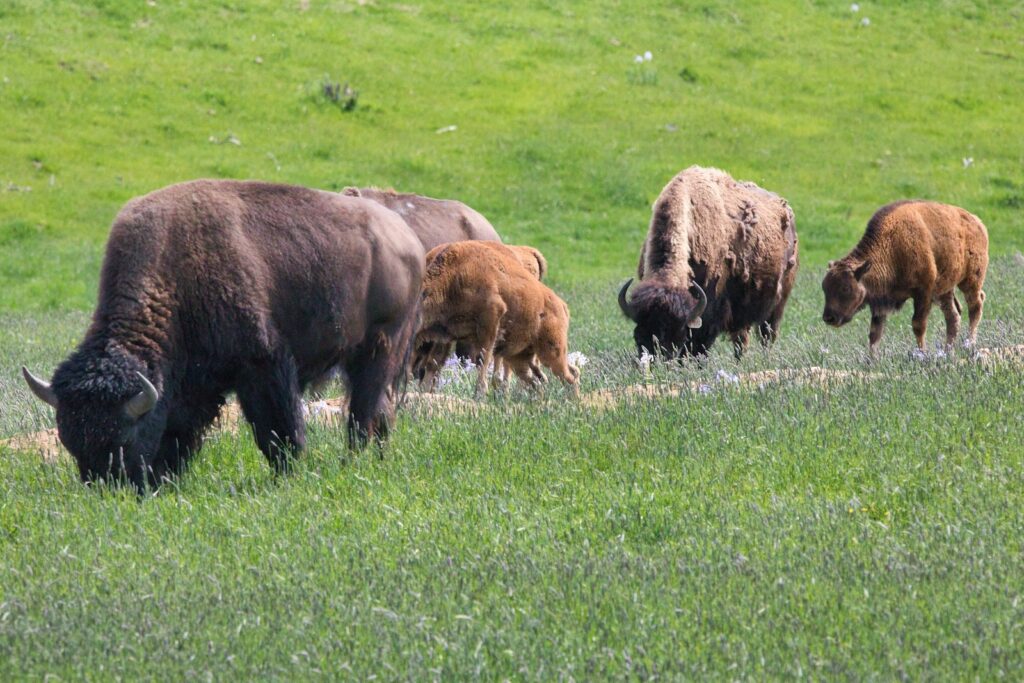
Few American animals have captured the artistic and cultural imagination as powerfully as the bison, appearing across diverse creative expressions from ancient petroglyphs to modern brand logos. Indigenous artists depicted bison in rock art, painted buffalo robes, and intricate beadwork for thousands of years, while early European-American artists like George Catlin and Karl Bodmer created vivid paintings of bison herds that helped eastern audiences envision the western wilderness. The bison’s distinctive silhouette became an iconic design element, appearing on the official seal of the Department of the Interior, the Kansas and Wyoming state flags, and the U.S. Buffalo Nickel (minted 1913-1938), which remains one of the most recognizable American coins ever produced. Contemporary artists continue this tradition, with bison featuring prominently in wildlife art, sculptures in public spaces, and even stylized digital representations. This persistent artistic presence reflects something deeper than mere appreciation for an impressive animal—the bison functions as a powerful visual shorthand for American wilderness itself, evoking the continent’s grand landscapes and complex history in a single, instantly recognizable form.
Rewilding America: The Future of Bison Restoration
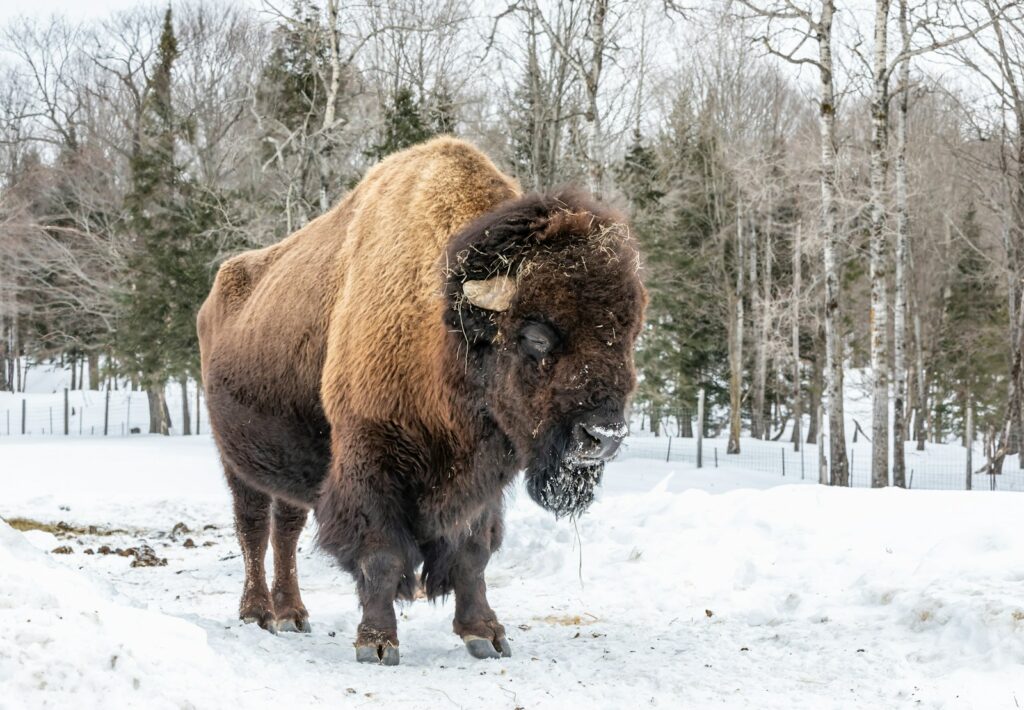
The coming decades hold transformative potential for bison conservation as ambitious rewilding initiatives gain momentum across North America. The American Prairie Reserve in Montana represents perhaps the boldest vision, working to assemble 3.5 million acres of connected public and private lands where bison can roam freely as part of a fully functioning prairie ecosystem. In Canada, Banff National Park successfully reintroduced bison in 2017 after a 140-year absence, while Mexico has launched restoration efforts in Janos Biosphere Reserve. Indigenous-led projects show particular promise, with the InterTribal Buffalo Council facilitating transfers of bison from public herds to tribal lands, restoring both ecological and cultural connections. Modern tools like remote monitoring, genetic testing, and habitat connectivity modeling now inform strategic conservation planning that was impossible for previous generations. Climate change presents both challenges and opportunities—as northern landscapes warm, suitable bison habitat may expand, but increased drought and fire regimes will require adaptive management approaches. While full restoration of the continent-spanning herds that once existed remains impossible in today’s developed landscape, targeted rewilding in strategic locations can create functional ecosystems where these magnificent animals once again fulfill their keystone role, allowing future generations to experience genuine American wilderness.
The Ultimate Symbol: Why Bison Represent American Wilderness
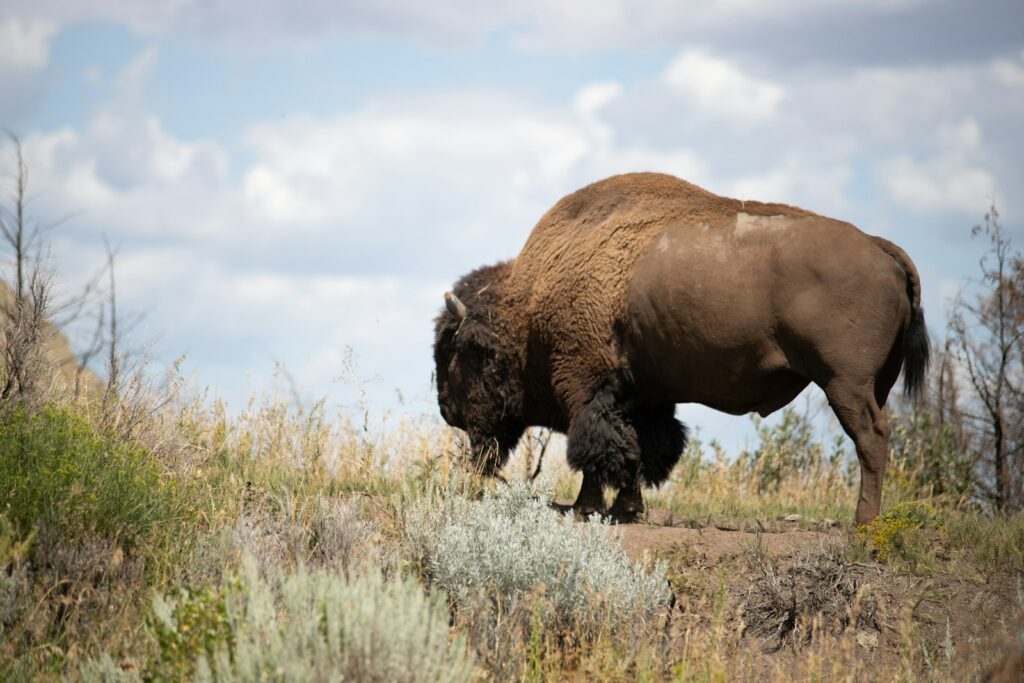
The American bison earns its status as the ultimate symbol of wilderness through a unique convergence of qualities no other species can match. Unlike animals that retreated to remote areas as settlement expanded, bison historically dominated the American interior, shaping the very landscape that would become the nation’s heartland. Their massive physical presence—combining prehistoric appearance with unmistakable silhouette—creates an immediate visceral connection to untamed nature that resonates across cultural backgrounds. The species embodies America’s conservation journey: from unimaginable abundance to catastrophic collapse to tenuous recovery, mirroring the nation’s evolving relationship with its natural heritage. Perhaps most powerfully, bison represent a living cultural bridge, maintaining unbroken significance from Indigenous traditions through pioneer history to contemporary American identity. When we protect and restore bison today, we aren’t simply conserving a species but preserving something fundamental about America itself—the memory and promise of a landscape shaped by natural forces rather than human design. In a nation where wilderness increasingly exists as designated fragments, bison remain our most potent reminder of what once was and what might, with dedication and vision, partially return: the magnificent, humbling wildness that defined a continent.
As we look to the future of conservation in America, the bison stands as both achievement and challenge. Their recovery from fewer than 1,000 animals to today’s half-million demonstrates what’s possible when society commits to protecting its natural heritage. Yet the work remains unfinished. The scattered herds of today, while impressive, are mere shadows of the vast populations that once shaped entire ecosystems. True restoration means not just preventing extinction but enabling bison to fulfill their ecological role in landscapes large enough to support natural behaviors. Whether we continue this journey depends not on scientific capability but on societal will—our collective choice to make room for wildness in a developed world. When Americans encounter a bison, whether in a national park or prairie reserve, they experience something increasingly rare: a direct connection to the untamed continent that existed before us and, with proper stewardship, will endure long after we’re gone.

